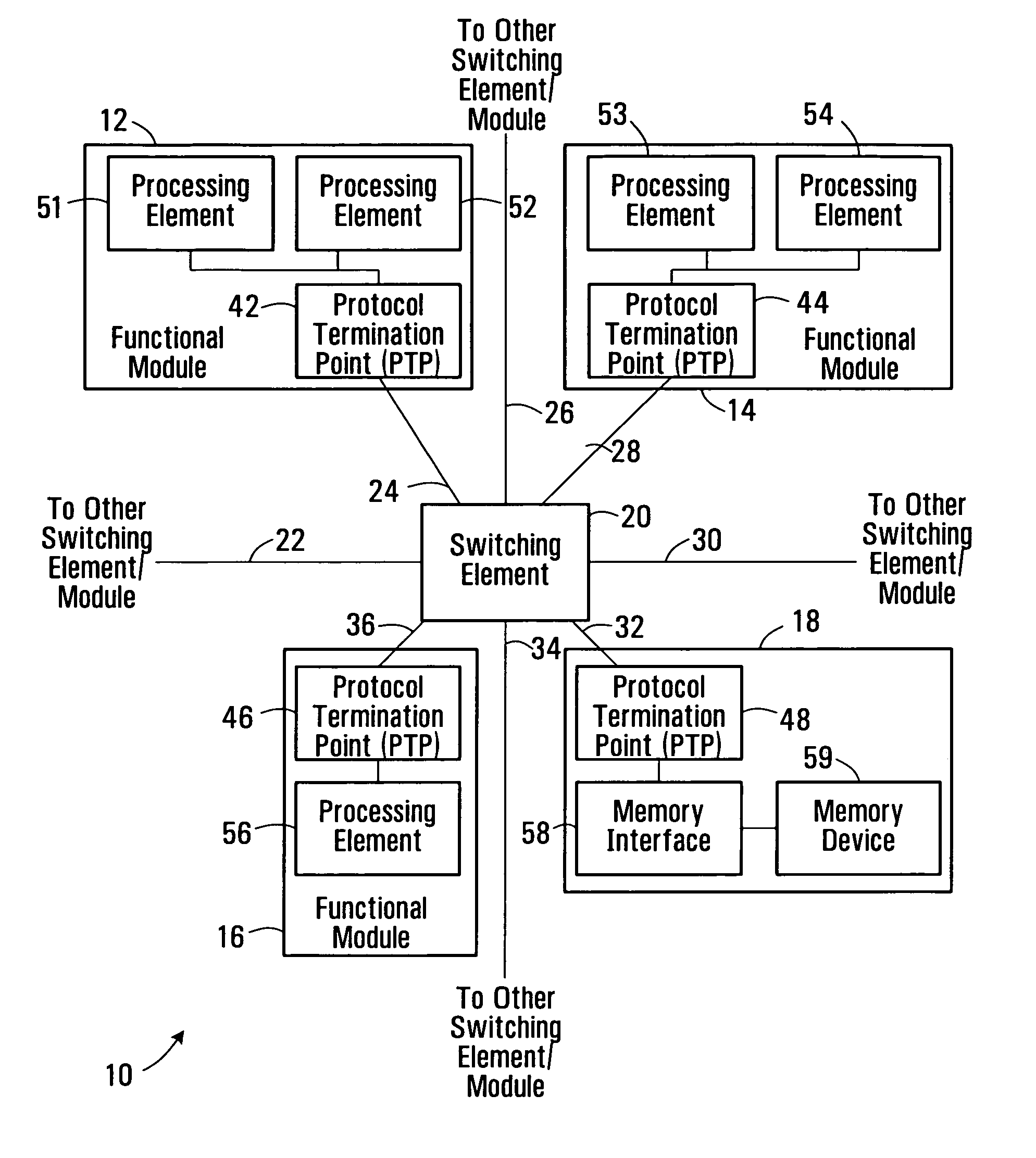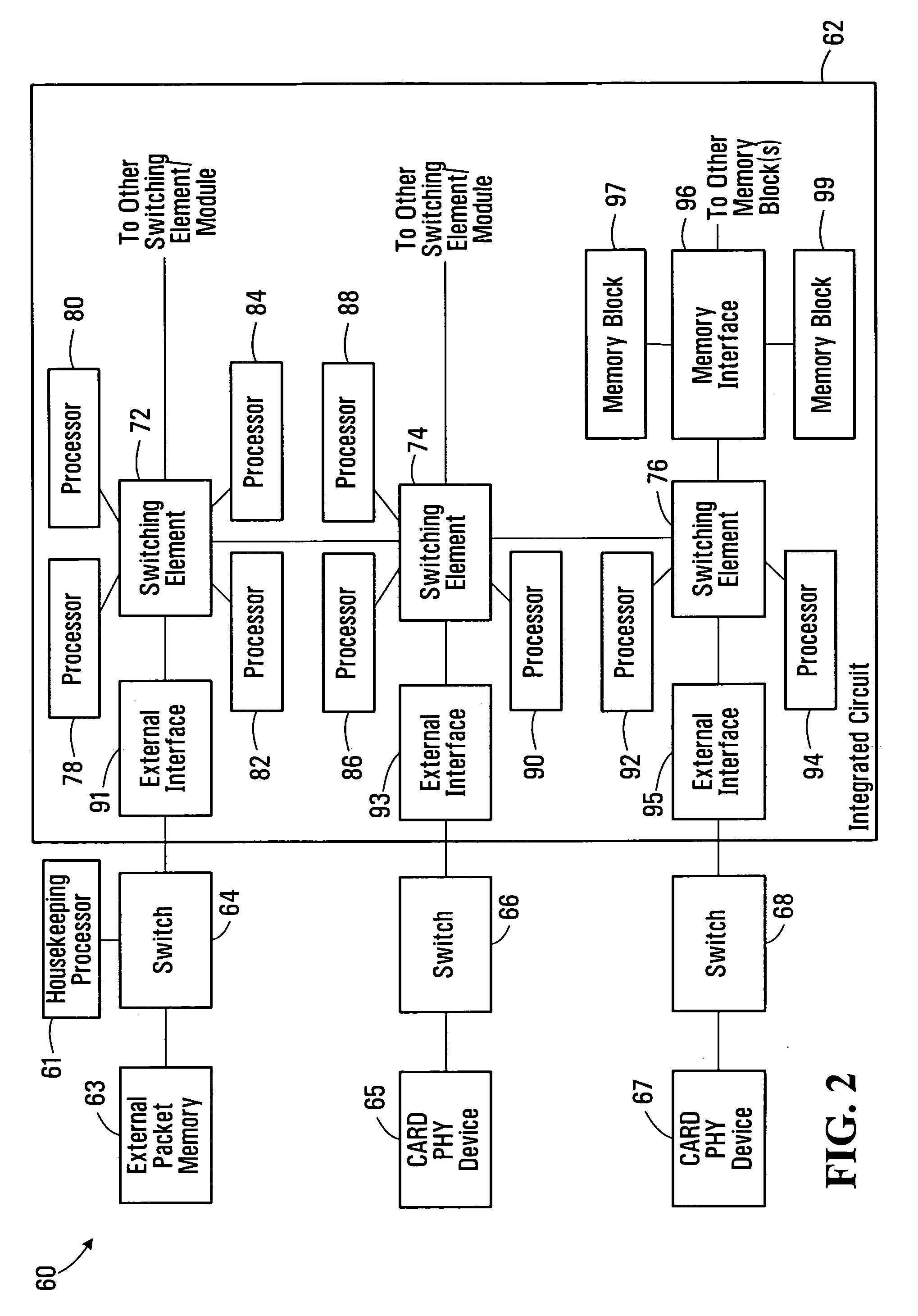Switched integrated circuit connection architectures and techniques
a technology of integrated circuits and connections, applied in the field of integrated circuits, can solve problems such as discrepancies, no such functionality is available in current on-chip connection architectures, and the transfer of processing elements between devices, so as to improve the access to and performance of components connected, reduce processor management requirements, and enhance isolation
- Summary
- Abstract
- Description
- Claims
- Application Information
AI Technical Summary
Benefits of technology
Problems solved by technology
Method used
Image
Examples
Embodiment Construction
[0038] As noted above, existing solutions for interconnecting functional modules within an integrated circuit, and possibly also externally, have several significant drawbacks. FIG. 1 is a block diagram of an internal connection architecture according to an embodiment of the invention, which addresses many of the shortcomings of existing solutions.
[0039] The architecture 10 represents an illustrative example of an internal connection architecture to be implemented in an integrated circuit. As shown, functional modules 12, 14, 16, 18 are operatively coupled to a switching element 20 through connection segments 24, 28, 32, 36. The switching element 20 may also be operatively coupled to other switching elements and to other functional modules through the connection segments 22, 26, 30, 34.
[0040] It should be appreciated that the invention is in no way limited to the particular architecture shown in FIG. 1. For example, an integrated circuit may include many switching elements, only o...
PUM
 Login to View More
Login to View More Abstract
Description
Claims
Application Information
 Login to View More
Login to View More - R&D
- Intellectual Property
- Life Sciences
- Materials
- Tech Scout
- Unparalleled Data Quality
- Higher Quality Content
- 60% Fewer Hallucinations
Browse by: Latest US Patents, China's latest patents, Technical Efficacy Thesaurus, Application Domain, Technology Topic, Popular Technical Reports.
© 2025 PatSnap. All rights reserved.Legal|Privacy policy|Modern Slavery Act Transparency Statement|Sitemap|About US| Contact US: help@patsnap.com



